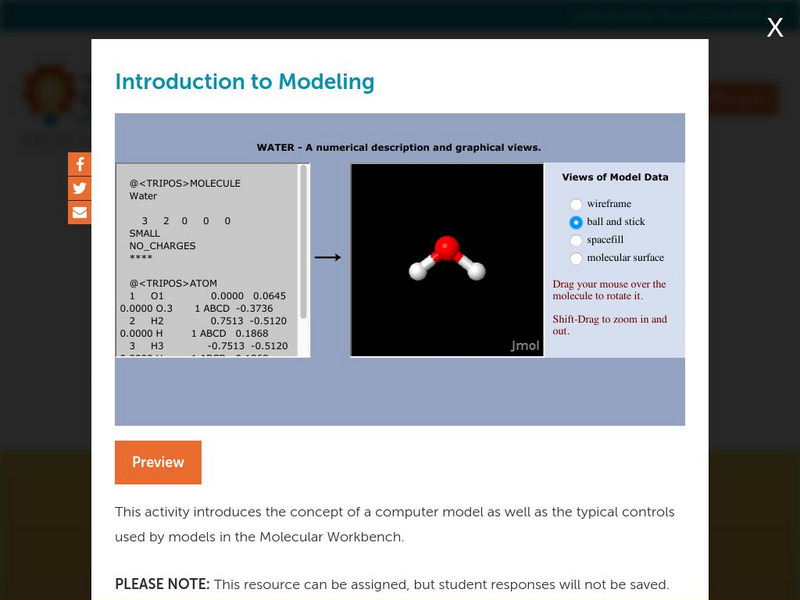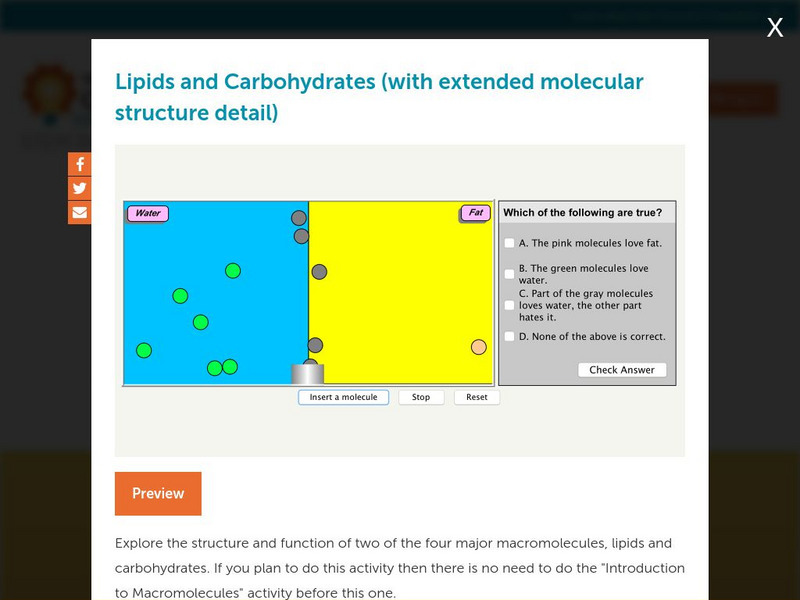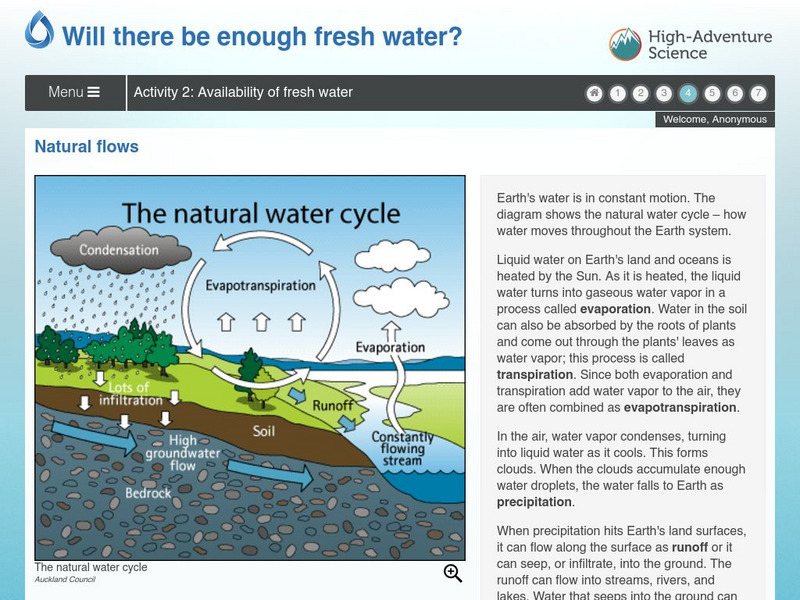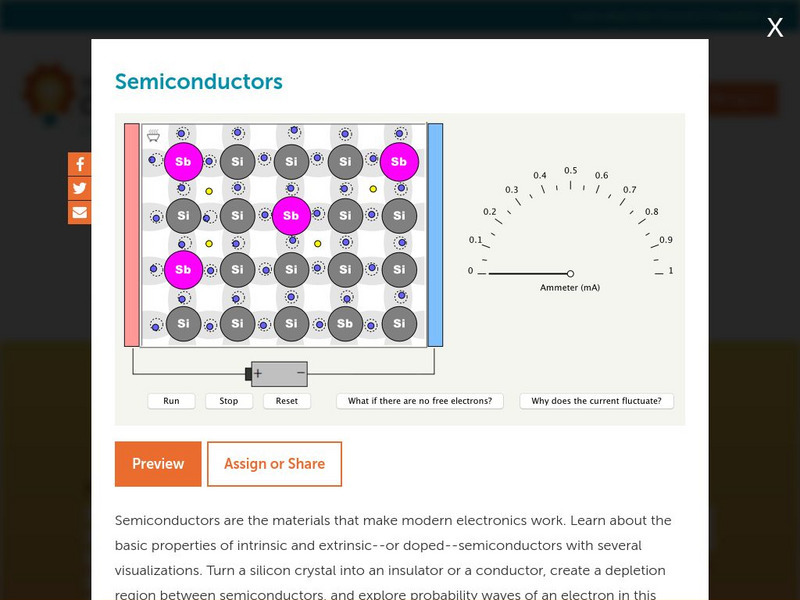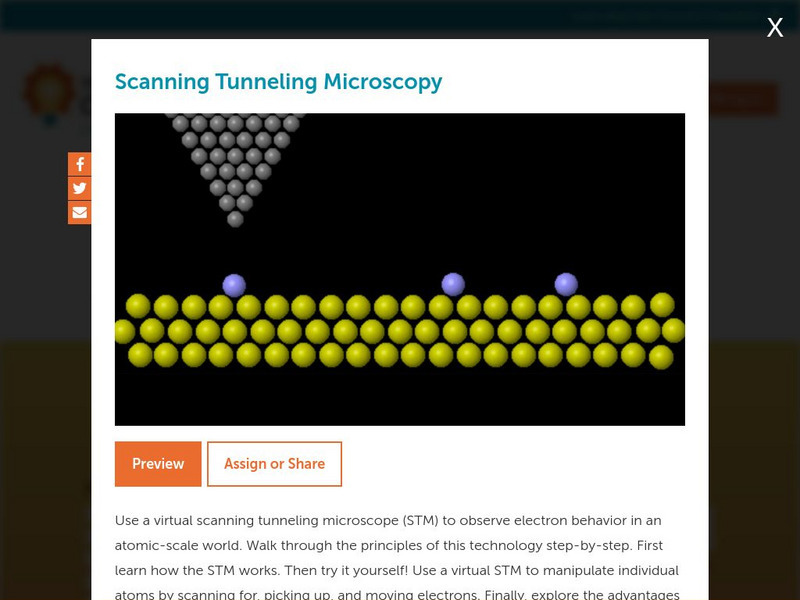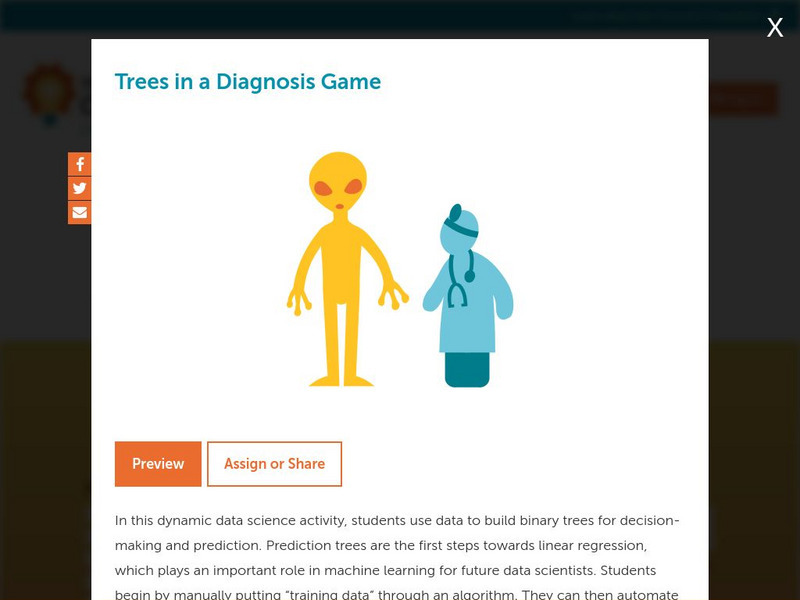Concord Consortium
Concord Consortium: Heat and Temperature
Learn that temperature measures average kinetic energy, and heat is the transfer of energy from hot systems to cold systems. Consider what makes a good conductor. (Requires Java)
Concord Consortium
Concord Consortium: Introduction to Modeling
This activity introduces the concept of a computer model as well as the typical controls used by models in the Molecular Workbench. (Requires Java)
Concord Consortium
Concord Consortium: Proteins and Nucleic Acids
Explore the structure and function of two of the four major macromolecules: nucleic acids and proteins. It is recommended that you complete the Introduction to Macromolecules activity before doing this one. (Requires Java)
Concord Consortium
Concord Consortium: Lipids and Carbohydrates
Explore the structure and function of two of the four major macromolecules, lipids and carbohydrates. (Requires Java)
Concord Consortium
Concord Consortium: Lipids and Carbohydrates
Focus on the basic structure and function of both lipids and carbohydrates, two of the four major macromolecule families in biological systems. (Requires Java)
Concord Consortium
Concord Consortium: Photosynthesis
Focus on how certain molecules called pigments interact with light and determine the color of plants. Explore how molecules such as chlorophyll interact with light and gain energy. This energy is used by plants to make sugar and release...
Concord Consortium
Concord Consortium: Catalysts
Students explore homogeneous catalysis. (Requires Java)
Concord Consortium
Concord Consortium: Stem Resources: Will There Be Enough Fresh Water?
Using groundwater models, students will analyze whether there will be enough fresh water available for the growing human population. Students will investigate how groundwater moves, what surface water is, and how we can use water...
Concord Consortium
Concord Consortium: Semiconductors
Semiconductors are the materials that make modern electronics work. Learn about the basic properties of intrinsic and extrinsic- or doped- semiconductors with several visualizations. Turn a silicon crystal into an insulator or a...
Concord Consortium
Concord Consortium: Evolution: Variations and Adaptations
Students discover that variation in plants allows some varieties to survive in near-drought conditions. Next, students learn that different types of rabbits prefer to eat different varieties of plants. Students make the connection...
Concord Consortium
Concord Consortium: How Electrons Move
Being able to control the movement of electrons is fundamental for making all electronic devices work. Discover how electric and magnetic fields can be used to move electrons around. Begin by exploring the relationship between electric...
Concord Consortium
Concord Consortium: Geiger
In this dynamic data science game, students try to track down a speck of extremely dangerous radioactive material, which has been lost somewhere in the middle of their lab.
Concord Consortium
Concord Consortium: Evolution: Natural Selection
The concept of interdependence in an ecosystem and its effect on the evolution of populations is further explored through a model of a dam. Students build a dam in the middle of the field, dividing the ecosystem in half to illustrate the...
Concord Consortium
Concord Consortium: Scanning Tunneling Microscopy
Use a virtual scanning tunneling microscope (STM) to observe electron behavior in an atomic-scale world. Walk through the principles of this technology step-by-step.
Concord Consortium
Concord Consortium: Quantum Tunneling
Delve into a microscopic world working with models that show how electron waves can tunnel through certain types of barriers. Learn about the novel devices and apparatuses that have been invented using this concept. Discover how...
Concord Consortium
Concord Consortium: Target Game
Steer a charged particle to a target, and observe forces and fields.
Concord Consortium
Concord Consortium: Bar Ty
Modeling traffic data is important for urban planning, creating transportation systems, and even predicting how much foot traffic a retail store can expect in a given day. This genre of dynamic data science activities could be classified...
Concord Consortium
Concord Consortium: Trees in a Diagnosis Game
In this dynamic data science activity, students use data to build binary trees for decision-making and prediction. Prediction trees are the first steps towards linear regression, which plays an important role in machine learning for...
Concord Consortium
Concord Consortium: California American Community Survey (Acs) Data Portal
Working with large datasets that support exploration of patterns is an essential first step in becoming fluent with data. In this dynamic data science activity, students can access part of the U.S. Census Bureau's American Community...
Concord Consortium
Concord Consortium: Stella
Students act as astronomers, studying stars in a patch of sky in our own galaxy. Using simulated data from spectroscopy and other real-world instrumentation, students learn to determine star positions, radial velocity, proper motion, and...
Concord Consortium
Concord Consortium: Micelles
Select an oil or water environment for molecules and observe how they are affected by interactions with their environment and each other.
Concord Consortium
Concord Consortium: Protein Folding
Generate all polar, all nonpolar, or random proteins and observe how the protein folds in response to these molecular properties. Explore how the potential energy of the system changes over time to draw conclusions about how proteins...
Concord Consortium
Concord Consortium: Polar and Nonpolar Interface
Observe how molecules with hydrophilic and hydrophobic regions move in a mixture of oil and water, and pay attention to changes in potential energy over time. Move and rotate the molecules to see how they interact with their surrounding...
Concord Consortium
Concord Consortium: Evolution: Changes in the Environment
This activity places the control of the environment under the student's control. A field starts off with a uniform light level, and thus capable of growing plants with medium-sized leaves. Students can alter the environment by growing a...

